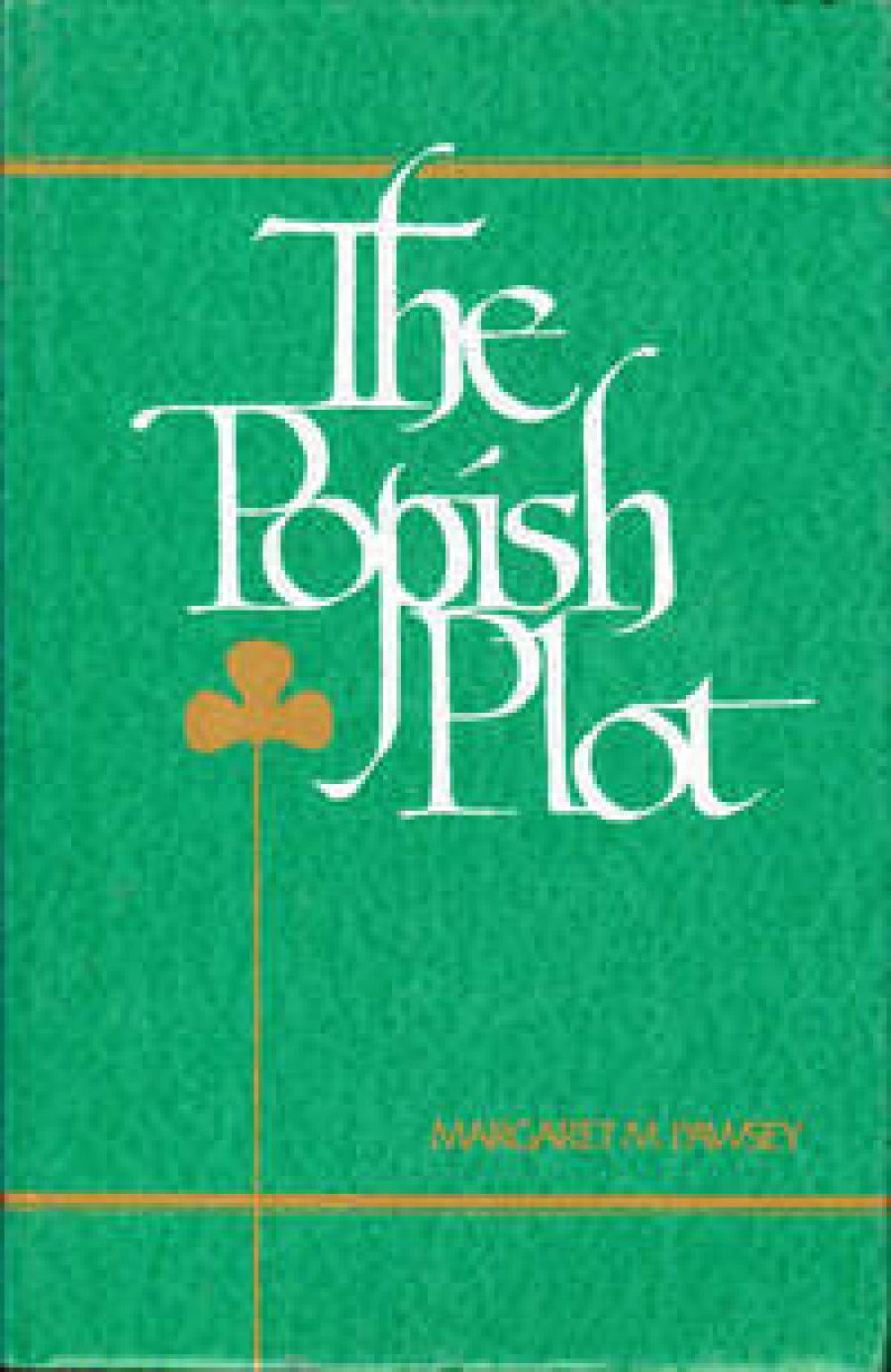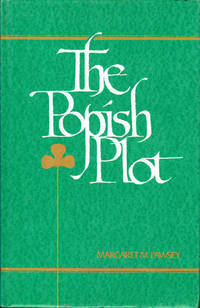
- Free Article: No
- Contents Category: Religion
- Review Article: Yes
- Article Title: Bigotry
- Online Only: No
- Custom Highlight Text:
Dr Pawsey’s The Popish Plot is a history of what never was – a popish plot to take over Victoria around 1860 to 1863. It makes fascinating reading. It is also quite partisan.
Considered from one angle this is the tale of four exceptional years, 1860-1863, when Victoria’s catholics suffered the full assault of protestant bigotry on a lavish and unprecedented scale. Protestants reminded catholics that they were welcome to settle in Victoria so long as they did not covet the place occupied by their ruling Anglo-protestant hosts.
- Book 1 Title: The Popish Plot
- Book 1 Biblio: Studies in the Christian Movement, distributed by Dove Communications, 21pp., index, $24.95 0 94980709 5
- Book 1 Cover Small (400 x 600):

- Book 1 Cover (800 x 1200):

Considered from another angle it is the tale of four exceptional years in which for the first time, the Anglo-protestant establishment was halted and challenged by a brash, aggressive Irish catholic political movement it had to surrender up some of its place and power. Shaken by the experience, protestants vented their worst fears that Victoria would soon be the staging ground for another contest between protestantism, the bible and liberty on one side, and popery, superstition and oppression of the other.
Dr Pawsey tells both tales side by side, and leaves no doubt that the first is to be treated seriously and the other is to be mocked. Catholics are entitled to fears, protestants are not. Catholics are justified in their historic memories of British oppression, protestants are not entitled to a historic memory of catholic intrigue and papal persecution. Catholics have souls seared by sufferings, protestants have goblin minds teeming with wiley Jesuits and debauched nunneries. Dr Pawsey’s catholic mind is totally incapable of entering the protestant mind. The result is a book which salutes the suffering Irish catholics of Victoria and parodies protestantism. Just when it appeared that the ‘catacomb’ mentality (i.e. progress amid persecution) had gone from Australian catholic historiography, it has reappeared. This does not destroy the book’s usefulness. It merely puts the reader on guard.
There was no popish plot. Dr Pawsey settles that. But who ever said there was? Protestants generally cannot properly be blamed for sounding the alarm. It came from a couple of short-lived sectarian newspapers; and whenever Dr Pawsey cites a virulent anti-catholic publicist by name she usually identifies him as Congregationalist. There is no evidence of main-stream protestantism raising a sectarian scare above the ordinary.
More telling is the persistent editorial support the Age, Argus and Herald gave to the outburst. Its theme was that to be British and protestant was to be a disciple of liberty, and to be Irish and catholic was to be the tool of illiberality. The book’s dust jacket suggests that here were the roots of a deep cultural conflict which, even yet, has not fully abated. The British and the Irish differed so profoundly in mentality, temperament and habit that each threatened the security of the other, or appeared to. Evidence of this abounded in England, Ireland and North America. So the interesting question is: what excited so exaggerated an expression of it in Victoria around 1860?
Politics did it. In the wake of self-government and a broadened franchise the Irish assumed a higher profile in politics. They were democrats and found exceptional leadership in O’Shanassy and, perhaps, Duffy. To arrest the spread of democracy the threatened privileged class (largely protestant and British) had to detach would-be protestant democrats from the new leadership. It appealed to some to consider the religious implications of supporting a papist in power. To others the appeal was to consider the consequences for the Crown of handing authority to a knighted officer of the papal power. By one appeal or the other the traditional holders of power hoped to attract the support of the recently enfranchised non-Irish and non-catholic colonists. In short, the battle of the 1860-1863 was between privilege and an emergent democracy. The rhetoric of the debate was religious sectarianism and national or cultural rivalry. Some, unfortunately, took the rhetoric seriously and mistook it for the real debate. Mostly they were Congregationalists.
All this is embedded in Dr Pawsey’s narrative, though she often places the emphases differently. Here there is room for debate. The book, though partisan, is stimulating and fun to read.


Comments powered by CComment